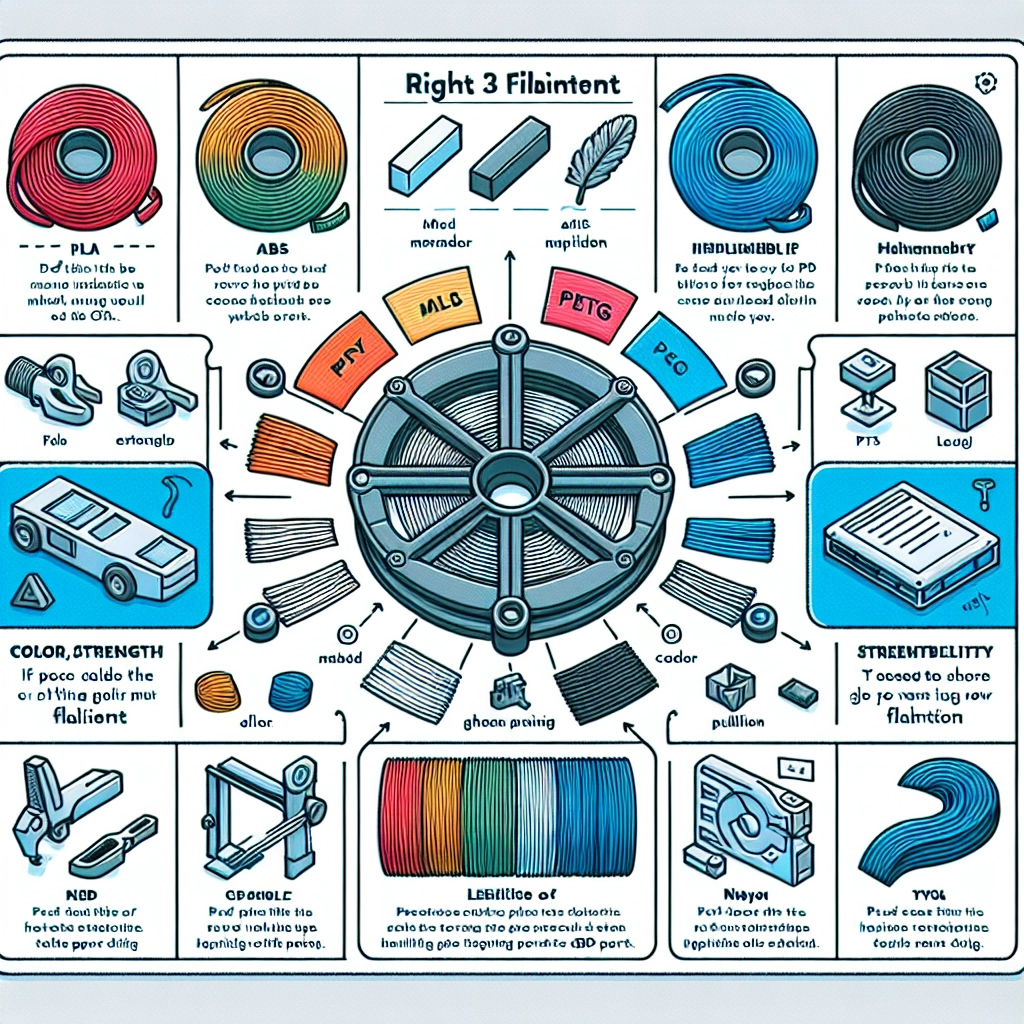A Beginner’s Guide to Choosing the Right 3D Filament
If you’ve recently jumped onto the 3D printing bandwagon or you’re considering it, you might find yourself scratching your head over the myriad of filament options available. Choosing the right 3D filament is crucial, as it can make or break your printing experience. Don’t worry if you feel overwhelmed; we’re here to help guide you through the basics of filament types, their properties, and how to choose the best one for your project.
Understanding Filament Types
Before diving into the types of filaments, it’s essential to note that most consumer 3D printers use one of two main filament types: PLA (Polylactic Acid) and ABS (Acrylonitrile Butadiene Styrene). These are the bread and butter of 3D printing filament, but there are plenty of alternatives out there. Let’s explore the most popular ones.
PLA (Polylactic Acid)
PLA is often recommended for beginners due to its ease of use. It’s derived from renewable resources like corn starch or sugarcane and is biodegradable—yes, you read that right! Here are a few key features of PLA:
- Ease of Printing: It adheres well to the print bed and doesn’t warp easily.
- Low Odor: Printing with PLA produces a sweet smell that’s far more pleasant than other filaments.
- Detail: It can produce fine details, making it great for intricate designs.
- Temperature Sensitivity: However, PLA isn’t very heat-resistant and can deform at higher temperatures.
ABS (Acrylonitrile Butadiene Styrene)
ABS is another common filament choice, particularly for those who want a bit more durability. Here’s what you should know:
- Strength: ABS is known for its toughness and impact resistance.
- Post-Processing: You can smooth ABS prints using acetone, which opens up more possibilities for finishing touches.
- Warping: The downside is that ABS can warp if the print bed isn’t heated correctly, making it a bit trickier, especially for beginners.
PETG (Polyethylene Terephthalate Glycol)
PETG has gained popularity as a middle ground between PLA and ABS. It combines the best features of both:
- Durability: Like ABS, PETG is tough and can withstand higher temperatures compared to PLA.
- Heat Resistance: It’s less prone to warping than ABS.
- Ease of Use: Many find PETG easy to work with, as it sticks well to the print bed and has a lower tendency to warp than ABS.
Specialty and Composite Filaments
Once you’re comfortable with the basics, you might want to explore specialty filaments. They come in a range of materials, including:
- Nylon: Flexible and strong, great for functional, durable prints.
- TPU (Thermoplastic Polyurethane): This is a flexible filament perfect for rubber-like objects.
- Wood, Metal, or Carbon Fiber Composites: These filaments contain blends that give your prints unique appearances and textures but often require specialized nozzles due to abrasiveness.
Choosing the Right Filament for Your Project
Now that you have an overview, how do you choose the right filament? Here are a few questions to help guide your decision:
-
What will you use the printed object for?
If it’s a decoration, PLA might suffice, but for functional parts, consider ABS or PETG. -
Are you new to 3D printing?
As a beginner, starting with PLA can help you build your skills without too much frustration. -
What’s your printer’s compatibility?
Make sure to check that your printer is compatible with the filament type you choose, especially if you venture into specialty filaments. -
What are your finishing needs?
If you plan to sand or paint your final product, materials like ABS that can be smoothed may be beneficial. -
What’s your budget?
Prices vary. While you can find affordable PLA, specialty filaments often cost more.
Final Thoughts
Choosing the right 3D filament doesn’t have to be a daunting task. By understanding the options you have and considering your project’s requirements, you can find the perfect match. Experiment with different materials as you get more comfortable with your printer, and don’t hesitate to ask for advice from fellow makers or in online communities. The world of 3D printing is vast and full of creativity—so dive in, have fun, and let your imagination run wild! Happy printing!

